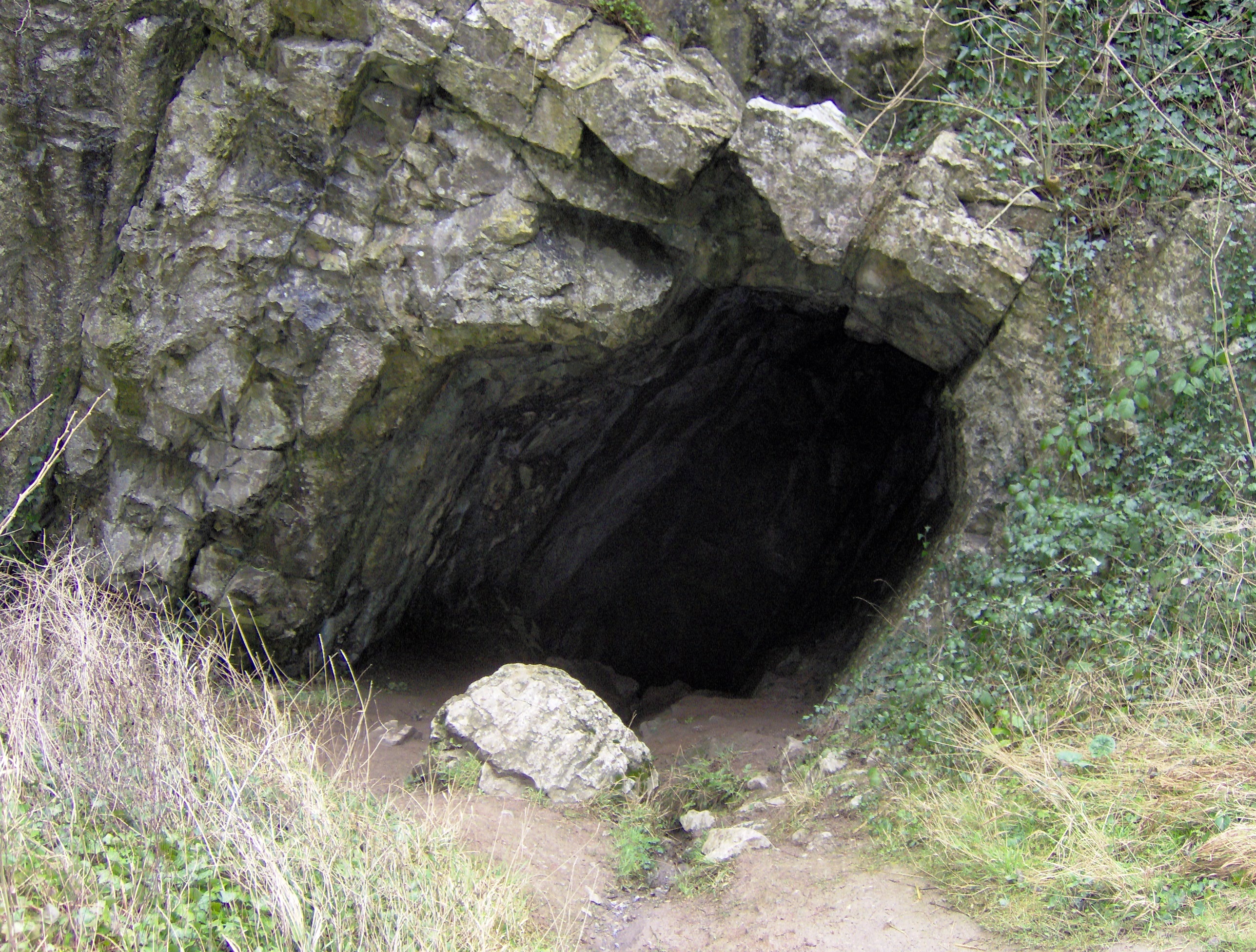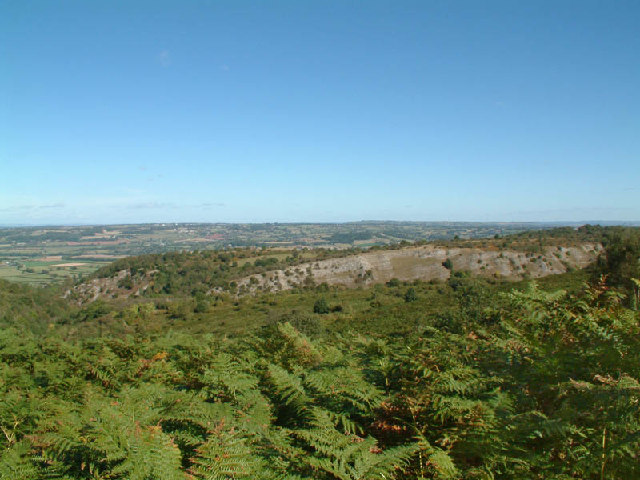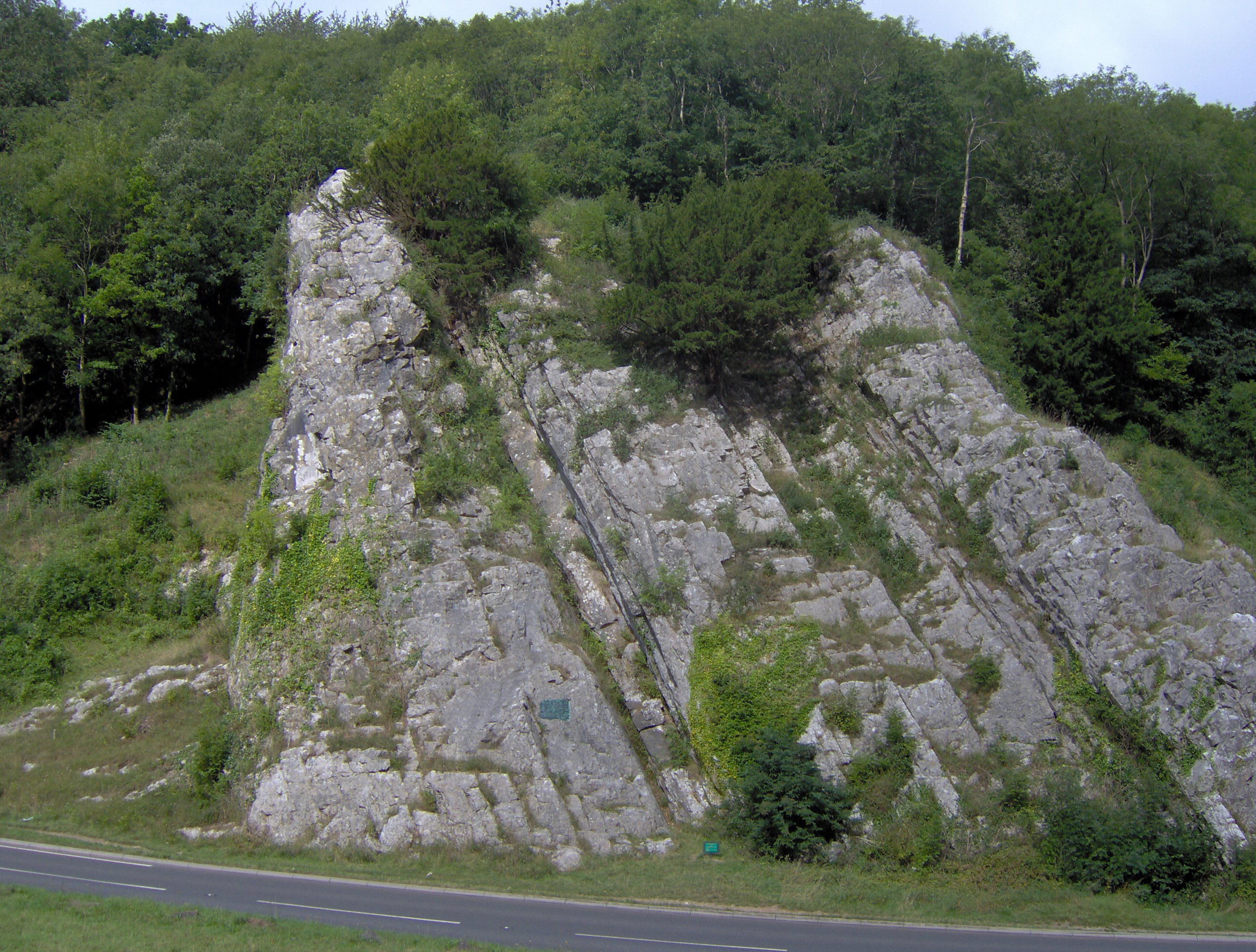Burrington Combe on:
[Wikipedia]
[Google]
[Amazon]
Burrington Combe is a
 A swallet, also known as a
A swallet, also known as a
 In recognition of its biological and geological interest, an area of within and around the combe was notified as a Site of Special Scientific Interest in 1952.
The calcareous grasslands support a diverse flora which includes
In recognition of its biological and geological interest, an area of within and around the combe was notified as a Site of Special Scientific Interest in 1952.
The calcareous grasslands support a diverse flora which includes
 There is a legend that Augustus Montague Toplady (1740–78), who was the curate at Blagdon, was inspired to write the hymn ''Rock of Ages'' while sheltering under a rock in the combe during a
There is a legend that Augustus Montague Toplady (1740–78), who was the curate at Blagdon, was inspired to write the hymn ''Rock of Ages'' while sheltering under a rock in the combe during a
Carboniferous Limestone
Carboniferous Limestone is a collective term for the succession of limestones occurring widely throughout Great Britain and Ireland that were deposited during the Dinantian epoch (geology), Epoch of the Carboniferous period (geology), Period. T ...
gorge near the village of Burrington, on the north side of the Mendip Hills Area of Outstanding Natural Beauty
An Area of Outstanding Natural Beauty (AONB; , AHNE) is an area of countryside in England, Wales, and Northern Ireland, that has been designated for conservation due to its significant landscape value. Areas are designated in recognition of ...
, in North Somerset
North Somerset is a unitary district in Somerset, South West England. Whilst its area covers part of the ceremonial county of Somerset, it is administered independently of the non-metropolitan county. Its administrative headquarters is in the ...
, England.
"Combe" or "coombe" is a word of Celtic origin found in several forms on all of the British Isles, denoting a steep-sided valley or hollow. Burrington Combe is a gorge through the limestone hills although there is now no river running through it. Various cave entrances are exposed which have been occupied by humans for over 10,000 years, with a hillfort
A hillfort is a type of earthwork used as a fortified refuge or defended settlement, located to exploit a rise in elevation for defensive advantage. They are typically European and of the Bronze Age or Iron Age. Some were used in the post-Roma ...
being built beside the combe in the Iron Age
The Iron Age is the final epoch of the three-age division of the prehistory and protohistory of humanity. It was preceded by the Stone Age ( Paleolithic, Mesolithic, Neolithic) and the Bronze Age ( Chalcolithic). The concept has been mostl ...
. The geology has led to a diversity of plant life.
According to legend Augustus Montague Toplady was inspired to write the hymn ''Rock of Ages'' while sheltering under a rock in the combe, although recent scholars have disputed this claim.
Geology
Water draining from Black Down has exposed rocks from the Devonian sandstones of the Portishead Formation which show through the limestone, Carboniferous mudstones of the Avon Group, limestones of the Black Rock Limestone Subgroup and oolitic limestones of the Burrington Oolite Subgroup; however the exact mechanism by which the gorge was formed is unknown. The northern and lower end of the combe, which was once the bed of the Congresbury Yeo, cuts through overlying Clifton Down Limestone.Triassic
The Triassic ( ) is a geologic period and system (stratigraphy), system which spans 50.6 million years from the end of the Permian Period 251.902 million years ago (Year#Abbreviations yr and ya, Mya), to the beginning of the Jurassic Period 201.36 ...
dolomitic conglomerate can also locally be seen along the combe.
Caves
Archaeological discoveries of early cemeteries demonstrate human occupation of the combe and its caves from theBronze Age
The Bronze Age is a historic period, lasting approximately from 3300 BC to 1200 BC, characterized by the use of bronze, the presence of writing in some areas, and other early features of urban civilization. The Bronze Age is the second prin ...
with some evidence of occupation during the Upper Palaeolithic
The Upper Paleolithic (or Upper Palaeolithic) is the third and last subdivision of the Paleolithic or Old Stone Age. Very broadly, it dates to between 50,000 and 12,000 years ago (the beginning of the Holocene), according to some theories coin ...
period. The combe contains the entrances to many of the caves of the Mendip Hills
The caves of the Mendip Hills are formed by the particular geology of the Mendip Hills: large areas of limestone worn away by water makes it a national centre for caving. The hills conceal the largest underground river system in Britain.
Geology ...
, including Aveline's Hole, Sidcot Swallet and Goatchurch Cavern. A through trip has been dug from Rod's Pot to Bath Swallet, which are both on the hills above the majority of Burrington caves. Further afield and equally accessible is Read's Cavern.
Goatchurch Cavern is long and has a surveyed depth of . It was first recorded in 1736, and explored by lead miners in the 19th century.
Around 1901, the owner unsuccessfully tried to turn it into a show cave. Notes of exploration in the 1920s record finds from the Pleistocene
The Pleistocene ( , often referred to as the ''Ice age'') is the geological epoch that lasted from about 2,580,000 to 11,700 years ago, spanning the Earth's most recent period of repeated glaciations. Before a change was finally confirmed in ...
period including bones of mammoth
A mammoth is any species of the extinct elephantid genus ''Mammuthus'', one of the many genera that make up the order of trunked mammals called proboscideans. The various species of mammoth were commonly equipped with long, curved tusks an ...
, bear, hyena and cave lion. During November 2003 inscribed marks were noticed in Goatchurch Cavern while cleaning away graffiti
Graffiti (plural; singular ''graffiti'' or ''graffito'', the latter rarely used except in archeology) is art that is written, painted or drawn on a wall or other surface, usually without permission and within public view. Graffiti ranges from s ...
. Three finely cut marks were uncovered, resembling the letter W with a patina darker than in nearby graffiti dated 1704. These have been identified as ritual protection marks (also known as witch marks or apotropaic mark
An apotropaic mark, also called a witch mark or anti-witch mark, is a symbol or pattern scratched on the walls, beams and thresholds of buildings to protect them from witchcraft or evil spirits. They have many forms; in Britain they are often ...
s), possibly dating from the period 1550 to 1750.
 A swallet, also known as a
A swallet, also known as a sinkhole
A sinkhole is a depression or hole in the ground caused by some form of collapse of the surface layer. The term is sometimes used to refer to doline, enclosed depressions that are locally also known as ''vrtače'' and shakeholes, and to openi ...
, sink, shakehole, swallow hole or doline, is a natural depression or hole in the surface topography caused by the removal of soil or bedrock, often both, by water flowing beneath the water-table at considerable depth. Sidcot Swallet is named after the Sidcot School
Sidcot School is a British co-educational independent school for boarding and day pupils, associated with the Religious Society of Friends. It is one of seven Quaker schools in England. The school is based in the Mendip Hills near the village of ...
Speleological Society who explored it in 1925.
The earliest scientifically dated cemetery in Great Britain was found at Aveline's Hole. The human bone fragments it contained, from about 21 different individuals, are thought to be between roughly 10,200 and 10,400 years old. A series of inscribed crosses found on the wall of the Aveline's Hole cave are believed to date from the early Mesolithic period just after the Ice age
An ice age is a long period of reduction in the temperature of Earth's surface and atmosphere, resulting in the presence or expansion of continental and polar ice sheets and alpine glaciers. Earth's climate alternates between ice ages and gre ...
.
Hillfort
Above the combe on its eastern side is the site of anIron Age
The Iron Age is the final epoch of the three-age division of the prehistory and protohistory of humanity. It was preceded by the Stone Age ( Paleolithic, Mesolithic, Neolithic) and the Bronze Age ( Chalcolithic). The concept has been mostl ...
univallate hill fort
A hillfort is a type of earthwork used as a fortified refuge or defended settlement, located to exploit a rise in elevation for defensive advantage. They are typically European and of the Bronze Age or Iron Age. Some were used in the post-Rom ...
known as Burrington Camp. It is around by and includes Romano-British
The Romano-British culture arose in Britain under the Roman Empire following the Roman conquest in AD 43 and the creation of the province of Britannia. It arose as a fusion of the imported Roman culture with that of the indigenous Britons, ...
elements.
Special Scientific Interest
 In recognition of its biological and geological interest, an area of within and around the combe was notified as a Site of Special Scientific Interest in 1952.
The calcareous grasslands support a diverse flora which includes
In recognition of its biological and geological interest, an area of within and around the combe was notified as a Site of Special Scientific Interest in 1952.
The calcareous grasslands support a diverse flora which includes Salad burnet
''Sanguisorba minor'', the salad burnet, garden burnet, small burnet, burnet (also used for ''Sanguisorba'' generally), pimpernelle, Toper's plant, and burnet-bloodwort, is an edible perennial herbaceous plant in the family Rosaceae. It has ...
(''Sanguisorba minor''), Knapweed
''Centaurea'' () is a genus of over 700 species of herbaceous thistle-like flowering plants in the family Asteraceae. Members of the genus are found only north of the equator, mostly in the Eastern Hemisphere; the Middle East and surrounding re ...
(''Centaurea scabiosa'' and ''Centaurea nigra''), Rock-rose (''Helianthemum nummularium'') and Wild thyme
''Thymus serpyllum'', known by the common names of Breckland thyme, Breckland wild thyme, wild thyme, creeping thyme, or elfin thyme, is a species of flowering plant in the mint family Lamiaceae, native to most of Europe and North Africa. It ...
(''Thymus praecox''). On the higher, more acidic, slopes goldenrod
Goldenrod is a common name for many species of flowering plants in the sunflower family, Asteraceae, commonly in reference to the genus '' Solidago''.
Several genera, such as '' Euthamia'', were formerly included in a broader concept of the gen ...
(''Solidago virgaurea''), wood sage
''Teucrium scorodonia'', common name the woodland germander or wood sage, is a species of flowering plant in the genus '' Teucrium'' of the family Lamiaceae. It is native to Western Europe and Tunisia, but cultivated in many places as an ornament ...
(''Teucrium scorodonia'') and common bent (''Agrostis capillaris'') can be found. There are also scrub plants including hawthorn (''Crataegus monogyna''), mountain ash Mountain ash may refer to:
* ''Eucalyptus regnans'', the tallest of all flowering plants, native to Australia
* Mountain-ashes or rowans, varieties of trees and shrubs in the genus ''Sorbus''
See also
* Mountain Ash, Rhondda Cynon Taf
Mounta ...
(''Sorbus aucuparia''), gorse (''Ulex europaeus'') and elder (''Sambucus nigra''). Several of the caves support bat populations.
Geologically it is recognised as a fluvial karst feature which partly intersects a buried and filled gorge of Triassic
The Triassic ( ) is a geologic period and system (stratigraphy), system which spans 50.6 million years from the end of the Permian Period 251.902 million years ago (Year#Abbreviations yr and ya, Mya), to the beginning of the Jurassic Period 201.36 ...
age.
Rock of Ages
 There is a legend that Augustus Montague Toplady (1740–78), who was the curate at Blagdon, was inspired to write the hymn ''Rock of Ages'' while sheltering under a rock in the combe during a
There is a legend that Augustus Montague Toplady (1740–78), who was the curate at Blagdon, was inspired to write the hymn ''Rock of Ages'' while sheltering under a rock in the combe during a thunderstorm
A thunderstorm, also known as an electrical storm or a lightning storm, is a storm characterized by the presence of lightning and its acoustic effect on the Earth's atmosphere, known as thunder. Relatively weak thunderstorms are some ...
in the late 18th century. The rock was subsequently named after the hymn. It is now generally accepted that the attribution of this location to the writing of ''Rock of Ages'' only arose well after Toplady's death (the 1850s is suggested by Percy Dearmer in ''Songs of Praise Discussed'', 1933) and has no proven factual basis.
The then Vicar at Westbury-on-Trym
Westbury on Trym is a suburb and council ward in the north of the City of Bristol, near the suburbs of Stoke Bishop, Westbury Park, Henleaze, Southmead and Henbury, in the southwest of England.
With a village atmosphere, the place is partly ...
H. J. Wilkins published a 16-page booklet in 1938 titled ''"An Enquiry concerning Toplady and his Hymn "Rock of Ages" and its connection with Burrington Combe, Somerset"'' that found that in relation to the hymn "All available evidence goes to show that it was published in 1776, soon after it was written." Toplady had left the neighbourhood of Burrington Combe in 1764.
In George Lawton's 1983 publication ''Within the Rock of Ages'' the author finds the claim that ''Rock of Ages'' was written at Burrington Combe to be only a legend, although he does state that "It is extremely doubtful whether at this distance of time, the legend that it was written in a cleft there can be proved or disproved." In George Ella's 2000 study ''A Debtor to Mercy Alone'' any links between the hymn and Burrington Combe are again said to be no more than legendary, with readers being referred to Lawton's 1983 study.
C. H. Sisson wrote a poem entitled ''Burrington Combe'', collected in ''Exactions'' (Manchester: Carcanet 1980). The local area, including Black Down and Ellick Farm, features prominently in his poetry.
References
External links
{{SSSIs Avon geological Mendip Hills Sites of Special Scientific Interest in North Somerset Sites of Special Scientific Interest notified in 1952 Stone Age sites in England Archaeological sites in Somerset Former populated places in Somerset Bronze Age sites in Somerset Canyons and gorges of England